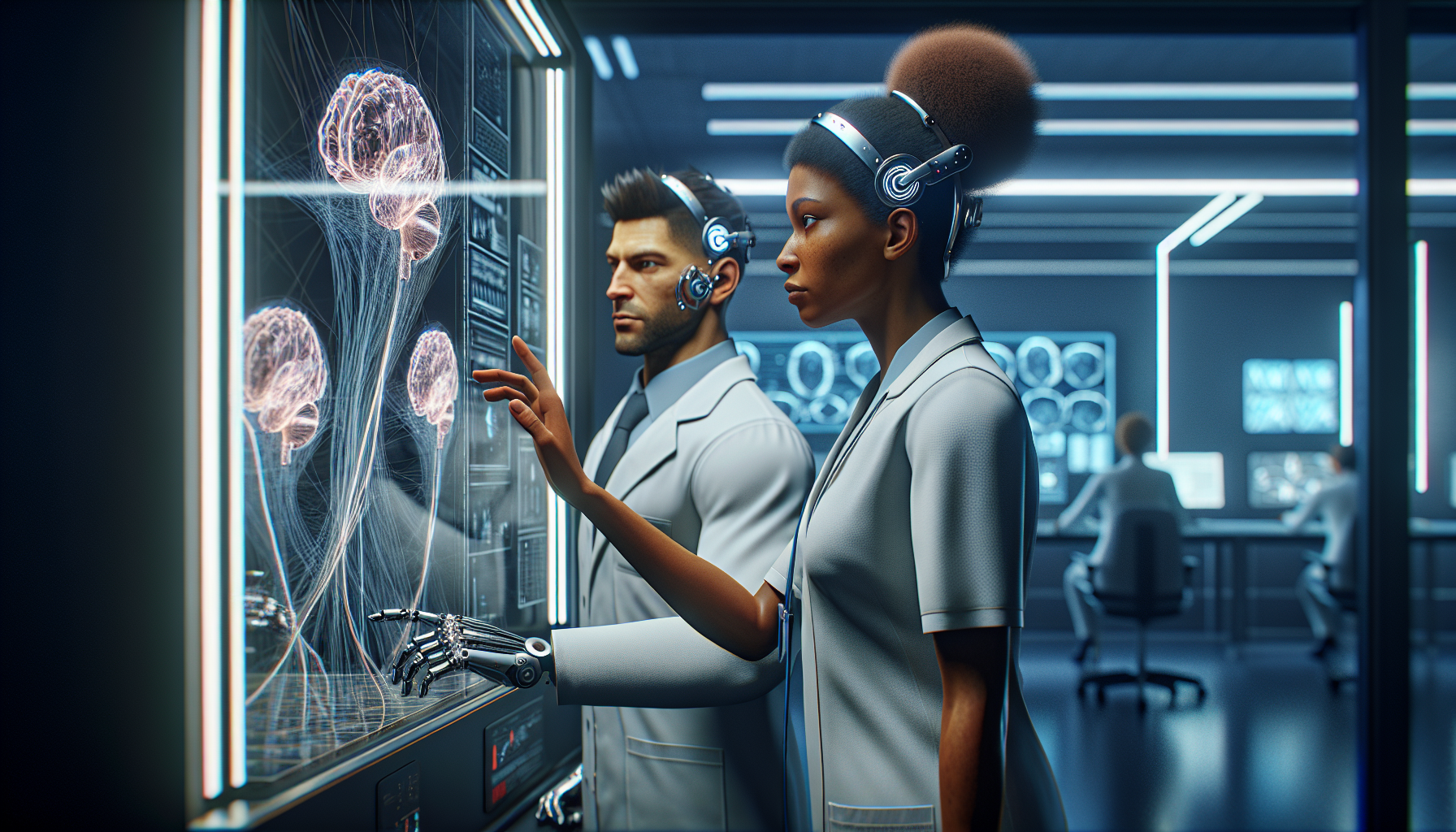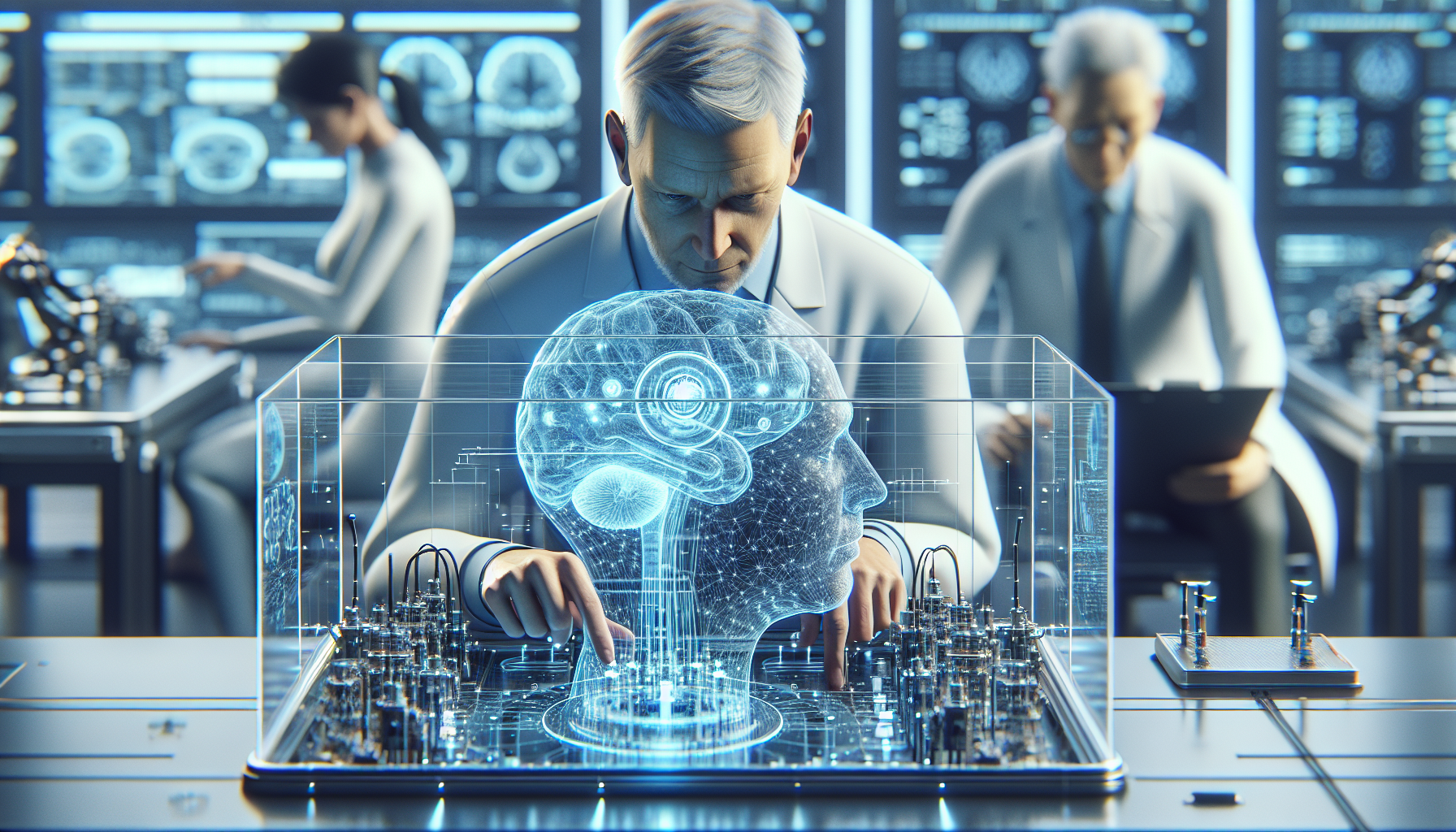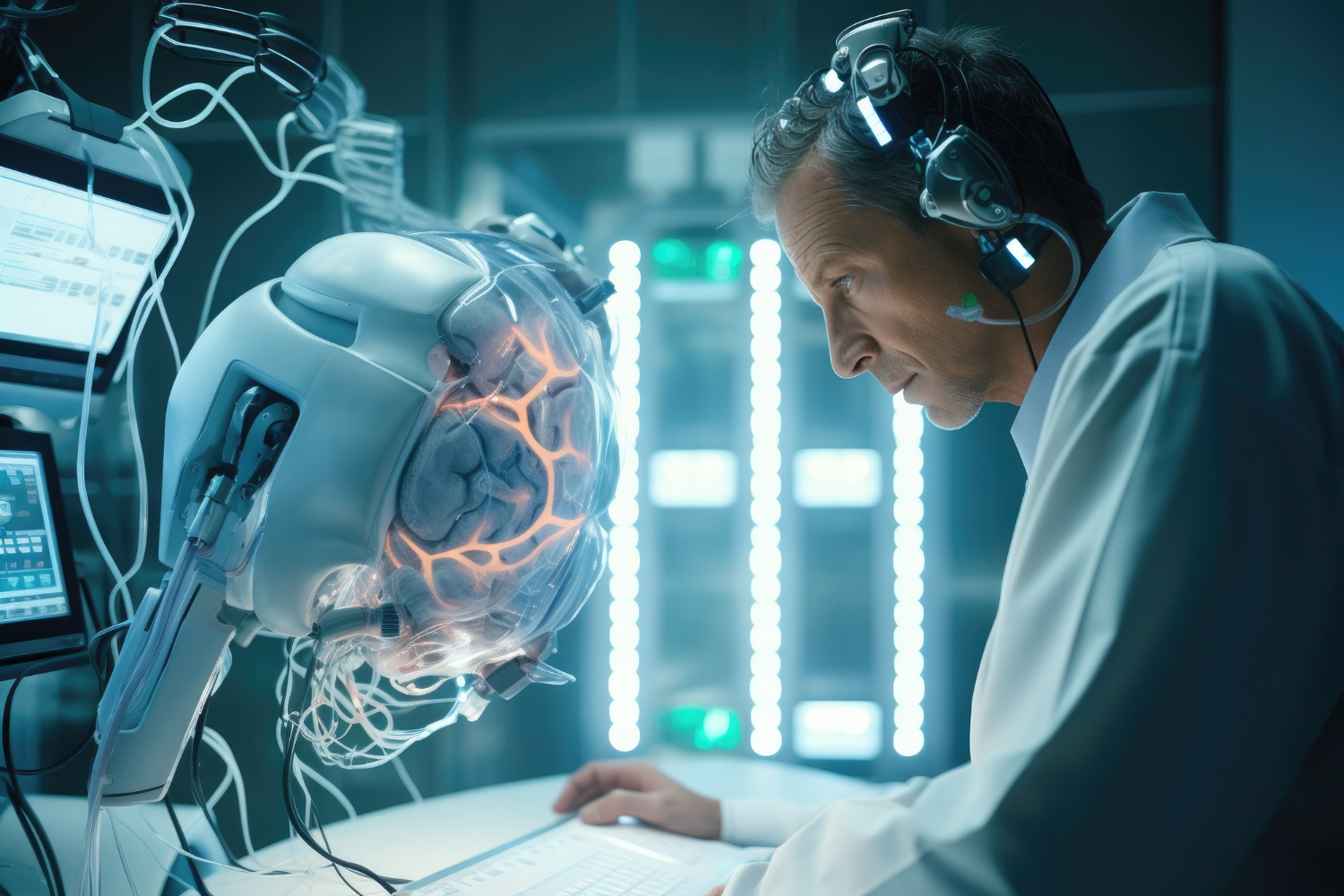Brain-computer interface technology is rapidly evolving, and one of the most talked-about advancements in this field is Elon Musk’s Neuralink. This groundbreaking technology aims to create a direct communication pathway between the human brain and computers, potentially revolutionizing how we interact with machines and treat neurological conditions.
Neuralink: A Deep Dive into the Technology

Neuralink, founded by Elon Musk and a team of seven scientists and engineers, is at the forefront of brain-computer interface technology. The company has developed an implantable device known as the N1 chip, which can interface directly with over 1,000 brain cells. This chip is designed to help people with paralysis control computers and mobile devices with their thoughts.
One of the key features of Neuralink’s technology is its use of ultra-thin, flexible threads that minimize damage to brain tissue during implantation. These threads are inserted into the brain using a specialized surgical robot, ensuring precision and safety. The N1 chip is powered by a small battery that can be charged wirelessly, making it convenient for everyday use.
Neuralink is also exploring the potential of its technology to treat neurological conditions such as Alzheimer’s and Parkinson’s diseases. By monitoring and stimulating brain activity, the N1 chip could offer new treatment options for these debilitating conditions.
Key Points to Understand Brain-Computer Interface Technology

To fully understand the potential of brain-computer interface (BCI) technology, it’s crucial to recognize its main components and applications. Here are five key points:
1. Understanding the Basics: Brain-computer interfaces (BCIs) enable direct communication between the brain and external devices. This technology can be either invasive, involving surgical implantation, or non-invasive, using external sensors. For a comprehensive overview, check out the Wikipedia page on BCIs.
2. Exploring Medical Applications: BCIs have significant potential in the medical field, particularly for individuals with disabilities. For example, BCIs can help people with paralysis regain control of their limbs or communicate through computer interfaces. The U.S. GAO report on BCIs provides an in-depth look at these applications.
3. Ethical and Security Considerations: As with any advanced technology, BCIs raise ethical and security concerns. Issues such as data privacy, potential misuse, and the implications of enhancing human capabilities need careful consideration. The Forbes article on BCIs discusses these challenges in detail.
4. Technological Challenges: Developing effective BCIs involves overcoming several technical hurdles, including signal accuracy, device miniaturization, and long-term biocompatibility. Researchers are continually working to address these challenges to make BCIs more reliable and accessible.
5. Future Prospects: The future of BCIs is promising, with potential applications extending beyond medical uses to areas like gaming, virtual reality, and even military operations. Companies like Neuralink are leading the way in exploring these possibilities.
FAQs About Brain-Computer Interface Technology

- How does Neuralink’s technology work?
Neuralink’s technology involves implanting a chip, known as the N1, into the brain. This chip uses ultra-thin, flexible threads to interface with brain cells, allowing users to control computers and mobile devices with their thoughts. The chip is powered by a small, wirelessly rechargeable battery and is inserted using a specialized surgical robot. - What are the potential applications of BCIs?
BCIs have a wide range of potential applications, from medical uses like helping people with paralysis regain mobility to enhancing human-computer interactions in gaming and virtual reality. They can also be used in military operations for hands-free control of drones and other equipment. - Are BCIs safe for human use?
BCI technology is still under development, and there are some potential safety risks to consider. These include risks associated with the surgical implantation of the device, such as infection or bleeding. There are also concerns about the long-term effects of having a foreign object implanted in the brain. Additionally, some BCIs may interfere with brain activity or even damage brain tissue. As research progresses, scientists are working to mitigate these risks and ensure the safety of BCI use.
Case Study: Neuralink’s Impact on Brain-Computer Interface Technology

Neuralink, founded by Elon Musk, has made significant strides in the field of brain-computer interface technology. The company’s N1 chip represents a major advancement in this technology.
One of the most notable achievements of Neuralink is its potential to help individuals with paralysis regain control of their computers and mobile devices. This technology could significantly improve the quality of life for people with severe disabilities. Additionally, Neuralink is exploring the use of its technology to treat neurological conditions such as Alzheimer’s and Parkinson’s diseases.
Neuralink’s work has garnered significant attention and investment, positioning the company as a leader in the BCI field. Their innovative approach and commitment to advancing this technology have set a high standard for other companies and researchers in the industry.
Future Predictions for Brain-Computer Interface Technology

The future of brain-computer interface technology is full of exciting possibilities. Here are five robust predictions based on current trends:
1. Increased Accessibility: As technology advances, BCIs will become more accessible to a broader range of people. This includes non-invasive options that do not require surgical implantation, making the technology more user-friendly and widely available.
2. Enhanced Medical Applications: BCIs will continue to revolutionize the medical field, offering new treatment options for neurological conditions and helping individuals with disabilities regain lost functions. This includes advancements in treating conditions like Alzheimer’s, Parkinson’s, and stroke.
3. Integration with AI: The integration of BCIs with artificial intelligence will lead to more sophisticated and responsive systems. This could enhance human-computer interactions, making them more intuitive and efficient.
4. Expansion into New Industries: BCIs will find applications in various industries beyond healthcare, including gaming, virtual reality, and military operations. This will open up new opportunities for innovation and growth.
Conclusion
Elon Musk’s Neuralink is paving the way for the future of brain-computer interface technology. With its innovative N1 chip and commitment to advancing this field, Neuralink is set to revolutionize how we interact with machines and treat neurological conditions.
As BCIs become more accessible and integrated with AI, the possibilities for this technology are endless. However, it is crucial to address the ethical and regulatory challenges to ensure the responsible development and use of BCIs.
References
- Neuralink: Official website of Neuralink, providing detailed information about their technology and advancements.
- Brain–computer interface – Wikipedia: Comprehensive overview of brain-computer interface technology, including its history and applications.
- Brain-Computer Interfaces | U.S. GAO: In-depth report on the potential and challenges of brain-computer interfaces.
- AI’s Next Frontier: Are Brain-Computer Interfaces The Future Of Communication? – Forbes: Article discussing the future possibilities and ethical considerations of BCIs.
- The Agentic Startup Manifesto - June 8, 2025
- Remote Hiring in 2025 - April 5, 2025
- Burnout in Remote Teams: How It’s Draining Your Profits - January 27, 2025
